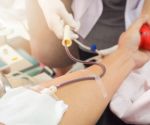Temperature, blood pressure, pulse [number of heart beats in a minute], respirations [number of breaths taken in a minute], oxygen saturation [indirect measure of oxygen in the blood] and pain are the vital signs taken in the ER. Pain can be measured on a verbal scale of 0 to 10. Zero represents no pain; 5 represents somewhat of a nuisance, but bearable; and 10 is an excruciating level of pain that is almost indescribable.
If a person is non-verbal, due to critical illness or sedation, or if the person is an infant or very young child, pain can be assessed by facial grimace and behavioral cues. These cues can be translated into a number from 0 to 10 based on standardized behavioral scales. Medical literature supports behavioral pain scales as being reliable measures of pain in non-communicative people. Additionally, visual acuity testing by the Snellen eye chart is considered the “vital sign of the eyes.” Visual acuity is the ability of the eye to see fine detail. This acuity is evaluated when a person has complaint of new onset blurred vision or traumatic eye injury.
Continue Learning about Critical Care
Important: This content reflects information from various individuals and organizations and may offer alternative or opposing points of view. It should not be used for medical advice, diagnosis or treatment. As always, you should consult with your healthcare provider about your specific health needs.




